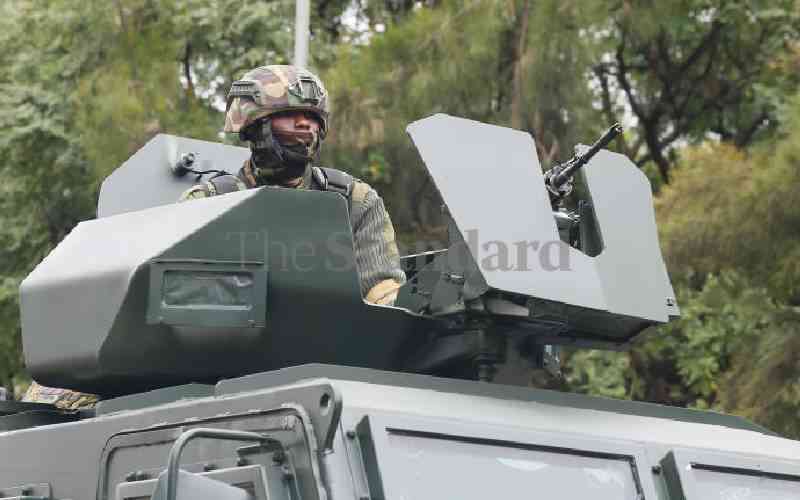There is a button reset on war on terror as far as Kenya is concerned. The recent attack on Kenyan troops in Somalia portrays how fluid the situation is in Somalia. Kenya remains heavily equipped and far more superior to the Islamist jihadist in Somalia. However, it should be noted that no matter how strong any army is, it may not be immune to constant successful insurgency by the militants.
United States mission in Afghanistan has had its highs and lows. US Special Forces was able to hunt down Osama Bin Laden from his hideout in Pakistan in 2011. However, there has been several incidents of Special Forces losing troops through enemy fire and more commonly many of the attacks were as a result of inside job by the Afghan forces (Who are fighting side by side with the United States forces).
Key contingency measures KDF has to take now is to urgently take the war to al-Shabaab. All resources should be directed towards defeating al-Shabaab. Any talk of containing al-Shabaab should be off the table. Like all insurgency groups al-Shabaab are good in surprise attacks. Al-Shabaab are commonly using dawn attacks to attack Kenyan troops. Their strategy is not to be seen because in light of day they may lose a face to face encounter. The biggest fear from jihadist is the flying bird (military attack choppers) and the eagle eye- the drones.
KDF ought to double their efforts in night raids in order to disrupt the enemy schemes. All actionable intelligence should be executed in the dark of the night when all jihadists are in their war room planning on attacking Kenya. KDF should move closer to Kenyan border to avert usual border closing by the militant insurgents who quite often turn their wrath to innocent Kenyan civilians in Lamu, Mandera, Wajir and Garissa.
KDF should make al-Shabaab’s life unbearable not only by killing their foot soldiers but by launching a special forces component aimed at hunting down their hierarchy of leadership. It took CIA more than 8 years to track down Osama bin Laden. Al- Shabaab leaders are merely three strikes away from KDF jets.
KDF needs to use technology more to keep up with the militants. United States often uses drone strikes to hunt down key leaders of terrorist organizations. The Jihad John was sent to hell by a US drone’s hell fire. Surveillance and armed drones are necessary tools to defeat them. No war is fought in a vacuum, a country committed to war on terror should not give any chance to the enemy advances.
Lastly and most important, Kenya’s war on terror should start and end in homeland. Hundreds of radicalized youths have faced combat by joining the group in Somalia and sneaking back in Kenya to back Al-Shabaab attacks on Kenyan soil. Boni forest is a haven of Kenyan based Al-Shabaab. Garissa is another area that harbours young men who have faced combat in Somalia.
Kenyans of different walks of life also subscribe to Al-Shabaab ideology. Many Kenyans have aided jihadist in launching attacks on Kenyan soil. These people should be profiled and hunted down. Boni forest harbours Boni and Wasanye communities. These two communities use the forest for hunting and gathering food. Al-Shabaab have set up a base inside the forest where they train and plan attacks on Kenyan soil. Other major forests that Al-Shabaab are scaling their attacks on Kenyans is the Dodori forest. This forest is rich with rivers and wildlife which offers Al-Shabaab hunting options instead of sending their Kenyan agents to buy food.
Boni and Dodori forest are both national reserves and should retain their titles by completely destroying Al- Shabaab militants.
By Richard Miriti
(Is pursuing Master of Arts in Homeland Security in USA. He is also the author of the book "The threat of terrorism in East and Central Africa"2008 )
 The Standard Group Plc is a
multi-media organization with investments in media platforms spanning newspaper
print operations, television, radio broadcasting, digital and online services. The
Standard Group is recognized as a leading multi-media house in Kenya with a key
influence in matters of national and international interest.
The Standard Group Plc is a
multi-media organization with investments in media platforms spanning newspaper
print operations, television, radio broadcasting, digital and online services. The
Standard Group is recognized as a leading multi-media house in Kenya with a key
influence in matters of national and international interest.
 The Standard Group Plc is a
multi-media organization with investments in media platforms spanning newspaper
print operations, television, radio broadcasting, digital and online services. The
Standard Group is recognized as a leading multi-media house in Kenya with a key
influence in matters of national and international interest.
The Standard Group Plc is a
multi-media organization with investments in media platforms spanning newspaper
print operations, television, radio broadcasting, digital and online services. The
Standard Group is recognized as a leading multi-media house in Kenya with a key
influence in matters of national and international interest.








